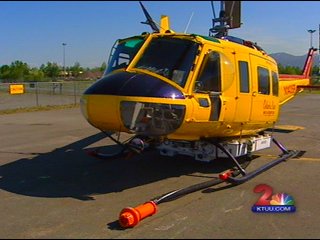In an unusual development, the National Wildfire Coordinating Group has announced a new pilot program in which Type 1 and Type 2 Incident Management Teams will evaluate and mentor the U.S. Fire Administration’s (USFA) Type 3 All-Hazard Incident Management Teams. The intent of the pilot program will be to provide recommendations on the possible integration of all-hazard resources in support of wildland fire incidents.
The USFA is responsible for the Type 3 All-Hazard Technical Assistance Program and has developed Basic (I-100) through Advanced (I-400) ICS training as well as position-specific training courses and task books that match NWCG competencies. Currently approximately 70 Type 3 IMTeams have been formed through this system.
The Type 1 and 2 IMTeams that are mentoring or supervising a Type 3 IMTeam, either on or off an incident, will be expected to sign off on their USFA task books and complete performance ratings when appropriate. When Type 3 IMTeams are assigned to an incident the cost for their assignment will be absorbed by the team members’ agencies and the USFA. The costs will not be charged to the incident.
According to the NWCG:
The goal will be to evaluate the Federal Emergency Management Agency (FEMA)/USFA program as a nationally viable program to be validated, endorsed and utilized for future national deployment in support of wildland teams or other national mobilizations under ESF4 or other auspices.
It is important to recognize that the intent of this pilot is not to have the FEMA/USFA Program qualify or endorse state and local resources to manage wildfire incidents independently. This would require meeting the National Wildland Fire Qualification System Guide (PMS 310-1); rather, it is to help build all-hazard response capabilities and boost resource availability to support large scale incidents.
The successful outcome of this Pilot Program will enable the wildland and the all-hazard communities to work more effectively together, thereby enhancing the overall national response capabilities.
I am having a hard time picturing how this would work, after a Type 3 IMTeam has gone through this process and had some USFA task books signed off. If they are not going to “manage wildfire incidents independently”, how would they be used? Maybe individuals from Type 3 teams will be cherry-picked to fill individual positions, for example, using a USFA-qualified Type 3 Logistics Section Chief on a fire if there was a vacancy on a Type 1 or 2 team. Surely not. If a Type 3 team had some Unit Leaders on their team (many don’t), it would be easier to integrate them into a Type 1 or 2 team.
Or a full Type 3 team might be used to perform a specific job on a fire, such as running a Functional Group, doing long-range planning, or working with local law enforcement to coordinate evacuations.
If the real goal is to simply give the Type 3 teams more emergency management experience while getting some task books signed off, that makes more sense.




